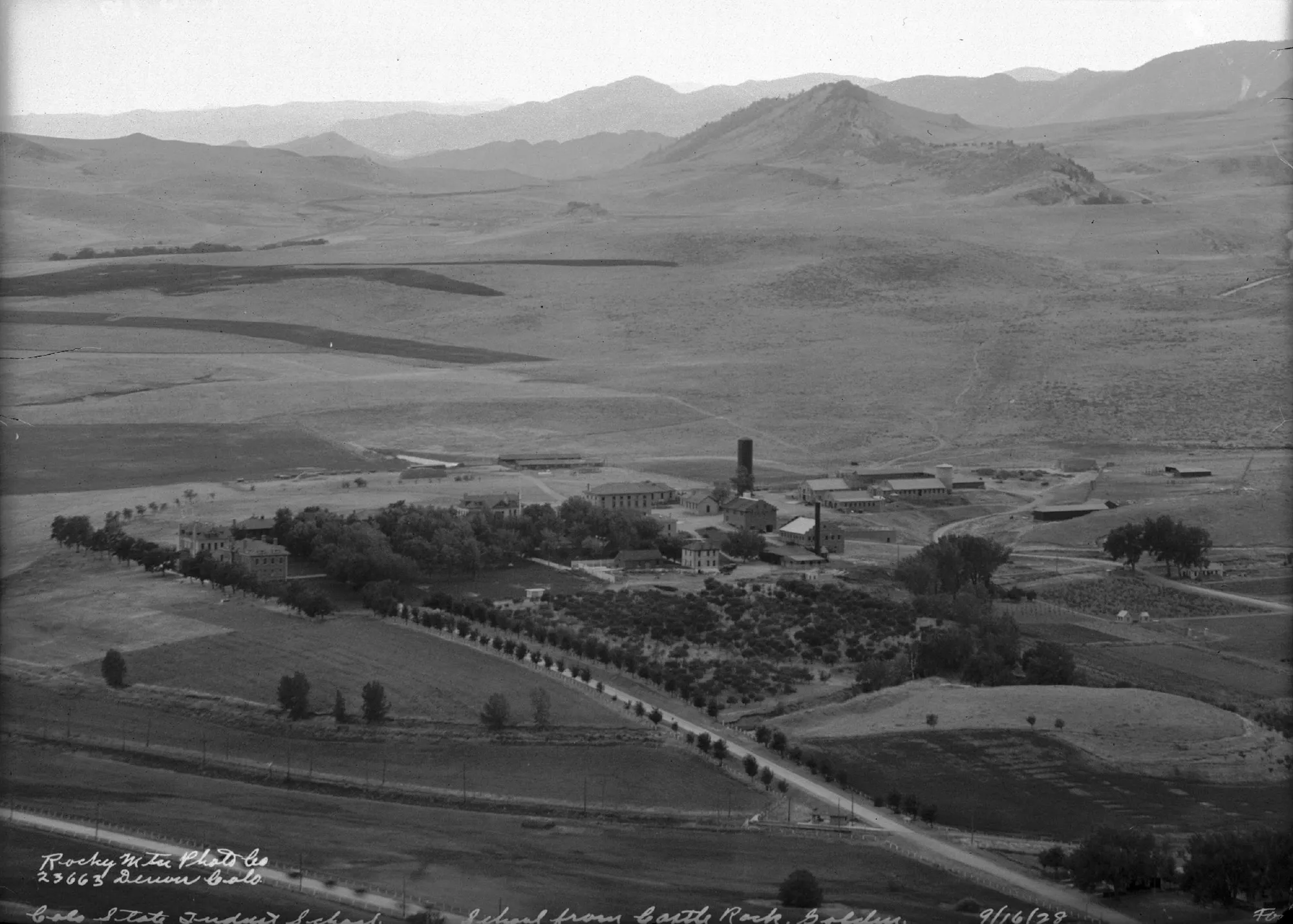From its beginning, the State Industrial School emphasized vocational training for the boys who stayed there. One of their major programs was teaching agricultural skills. The boys planted crops, maintained orchards, and kept poultry, cattle, and draft horses.

86 Years Ago
The December 29, 1938 Colorado Transcript described the impressive volume of food that the boys had raised. While most of the produce was intended for consumption at the school, the school newspaper calculated the market value of the various crops. The season’s yield included:
750 lbs asparagus (worth $41.50), 50 bushels apples ($50), 1,500 lbs beets ($17.50), 4,190 lbs beans (197.10), 16,550 lbs cabbage ($123.75), 6,000 lbs carrots ($50), 1,355 dozen ears of corn ($154.50), 525 lbs cucumbers ($5.75), 7,200 lbs cherries ($336.20), 740 dozen bundles green onions ($74), 5,200 lbs dry onions ($52), 4,510 lbs peas ($234.50), 3 bushels peppers ($3), 2,000 lbs pumpkin ($20), 245 dozen bunches radishes ($24.50), 500 lbs rhubarb ($12), 89 crates raspberries ($153), 36 crates strawberries ($92.50), 700 lbs spinach ($7.50), 725 lbs squash ($15), 2,550 lbs turnips ($25), 700 lbs tomatoes ($15), 28 crates lettuce ($28)
They also canned the following:
308 quarts beets ($42.30), 2,938 quarts beans ($381.94), 2.140 quarts cherries ($321), 458 quarts corn ($73.28), 188 quarts raspberries ($30. 8), 768 quarts peas ($130.50), 8 barrels of kraut ($80).
In all, the school estimated that they had produced $2,770.70 worth of food.
The article also mentioned that the boys had raised turkeys that year, which had provided both their Thanksgiving and Christmas dinners.
Erratum: Yesterday's article about the early days of the New Deal provided the wrong year. I cited the Transcript date as 12/28/28. It should have been 12/28/33.







